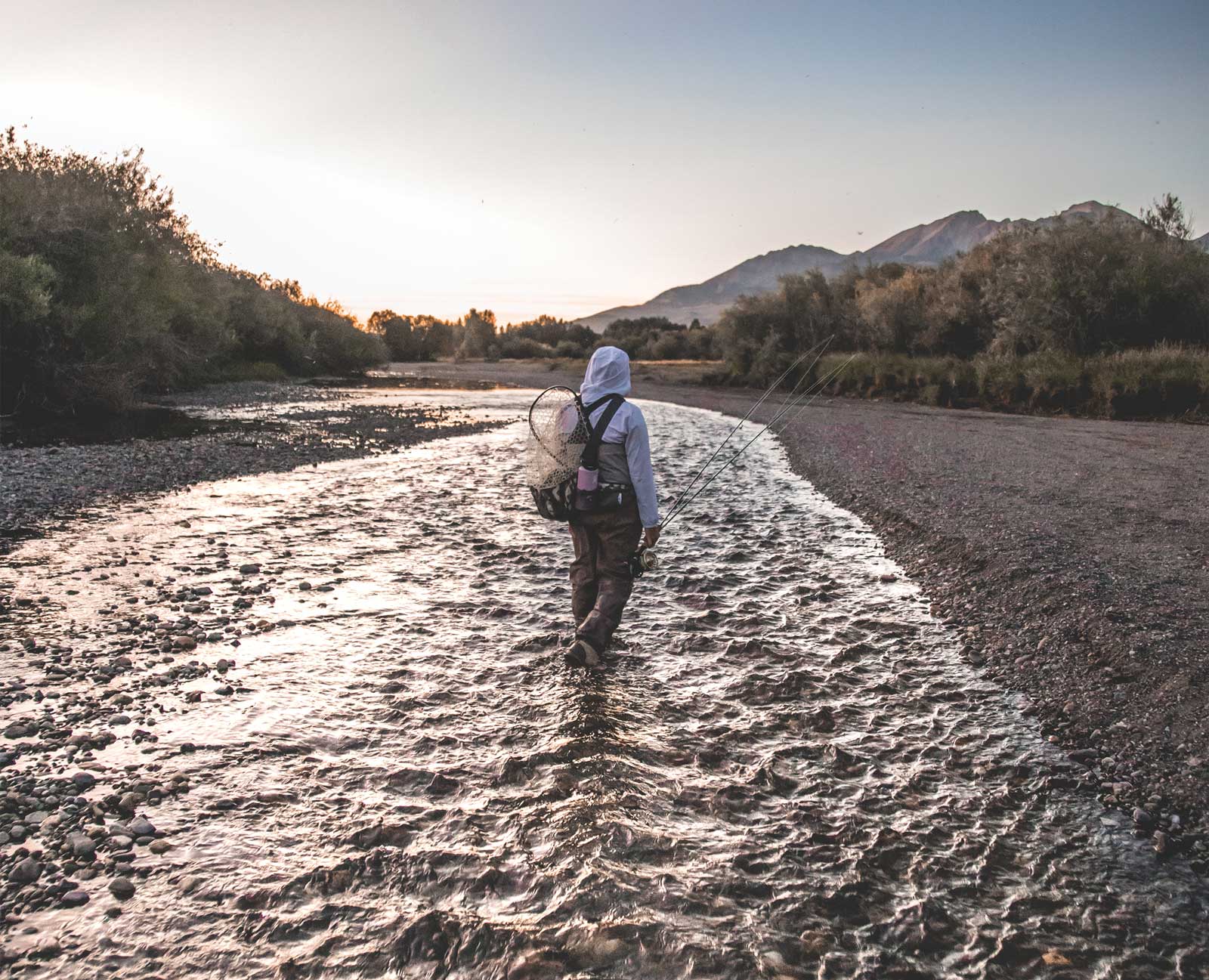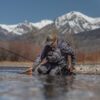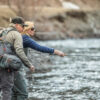“Success begets confidence and confidence begets success—and that fine upward spiral is the best restorative of streamside sanity.” ~ Howard T. Walden
Each presentation is a feedback loop. The drift, the depth, the timing, the angle, the fly, the response of the fish…this and more informs my next presentation. No two presentations are alike. And whether the cast begets a success or a failure, my confidence builds. The definition of streamside sanity is knowing that the next cast may be the one.
Silver Creek
The late morning action is starting to peter out with a dash of Tricos along with a few Baetis and Callibeatis spinners. The consistent surface action has shifted to the Callibaetis emergence and spinner fall in the afternoon. This bug is smaller than the early season Callibaetis, so you will need to have plenty of size 18 and 20s in all phases of this insect’s life cycle. Search the sloughs and slow water stretches of the upper and lower Kilpatrick’s Pond and look for mayflies rhythmically bouncing just above the water. On windy days, try a size 16 or 18 Hackle Stackers along with a Quigley Cripple or the Callibaetis Floating Nymph. When the water is still, try Harrop’s Partridge Spinner or Harrop’s Cutwing Dun in a size 18. No matter the situation, be sure to have a bottle of Frogs Fanny to keep the fly afloat. Also watch the weather forecast over the next few weeks as cloudy, cool days will trigger fantastic Baetis hatches. These Baetis are small and you will need patterns in size 20, 22, and 24 to match the hatch. For this bug, size is more important than color and fish should take any well presented fly. Also, be prepared for some Mahogany Duns as they will make an appearance in the coming weeks.
The Big Wood
The August heat wave has forced the fish to seek oxygen in the shallow riffles at the head of the runs. Also, with the lower water, it is important that you approach carefully and scan the water for feeders. Often the largest fish hold in the least likely water and these fish can be spooky. Typically, a well placed dry or nymph will get a take on the first presentation. For dries, I recommend using small caddis or parachute patterns (16-18) with a hint of orange to show up nicely in the glare and light chop of riffles. Also, an occasional Red Quills has been spotted in the South Valley and should make their way up river as we head into cooler temperatures in the weeks to come. Terrestrials have also been a good bet, especially hoppers and flying ants. Trailing a small size 16 or 18 Zebra Midge in red or black, a pheasant tail, Bishop’s Dynamite, Rainbow Warrior, or a Perdigon can also be effective during slow periods. As always, Euro Nymphing is a great way to turn those missed takes into hookups.
Warm Springs and Trail Creek
These creeks are very skinny right now but are fun to fish if you prefer a small stream experience. Anglers who are willing to crawl will be the most successful. The same flies and techniques that work on Wood will work here.
Salmon River
With the low water, the dry fly action on both the upper and lower river in the afternoons is really picking up and the nymphing and streamer fishing is good the rest of the time. For dries try an assortment of attractors in size 12 through 16 work well. Also, size 12 tan or olive Elk Hair Caddis work well to imitate the Spruce Moths along the banks of wooded water. Valley Creek, Marsh Creek, and Bear Valley Creek are also fun options this time of year and are a great place for a September fishing picnic with family and friends.
South Fork of the Boise
Flows are still up at around 1,150 CFS making it better for floating than wading. Flows Should drop soon so keep your eyes on this one. In the meanwhile, hoppers have been turning fish, but the main action is in the afternoon on Pinks. You will need to scan the water carefully looking for this bug and any fish feeding on it. Be sure to have both dun and emerger patterns to fool these picky fish. Nymphing can fill in the periods before and after the Pink hatch; try large rubber leg stone flies, caddis, and midge patterns.
Upper Lost Drainage
This is a good option if you like to fish in an area for its scenery and solitude. Plan on covering lots of water you will find some cutthroat, rainbows, as well as mountain whitefish in the deeper runs. Keep in mind, the trout will give you one chance, so make your first presentation count.
The Lost Below Mackay
Flows are still up at around 420 CFS; tough wading but we should see flows drop as demands for water drop. Expect Trico and Baetis hatches to remain strong. Take a good number of House of Harrop Baetis and Tricos in size 20 to 24, and with the cooler temps in the forecast, the hatch and spinner fall to move to the middle of the day into the afternoon. Nymphing is always effective and with lower flows, sight nymphing with a single small dark nymph can be fun and effective. You might also try a standard dry dropper rigs or Euro Style techniques.
Local Ponds
All the ponds have been stocked as we head into the last month of summer. Drop on by before you take your family fishing and we will make sure you have the right gear to be successful.
Silver Creek: Tricos | PMD | Callibaetis | Baetis | Griffiths Gnats | Parachute Midge | Iron Lotus | SRS Bullet French Nymph | Jake’s Perdigon 14-18 | DB Zebra Midge in black, red, or olive
Big Lost, Big Wood and Tributaries: Tricos | Beatis | Purple Haze | Elk Hair Caddis | Golden Stone | Pats Rubber Legs | Buggers | Chubby Chernobyl’s | Bishop’s Dynamite | SRS Bullet French Nymph | Jake’s Perdigon | King Prince Nymph | Zebra Midge
| Silver Creek Big Wood The Big Lost South Fork of the Boise Salmon River |
148 cfs 221 cfs 421 cfs 1170 cfs 742 cfs |




